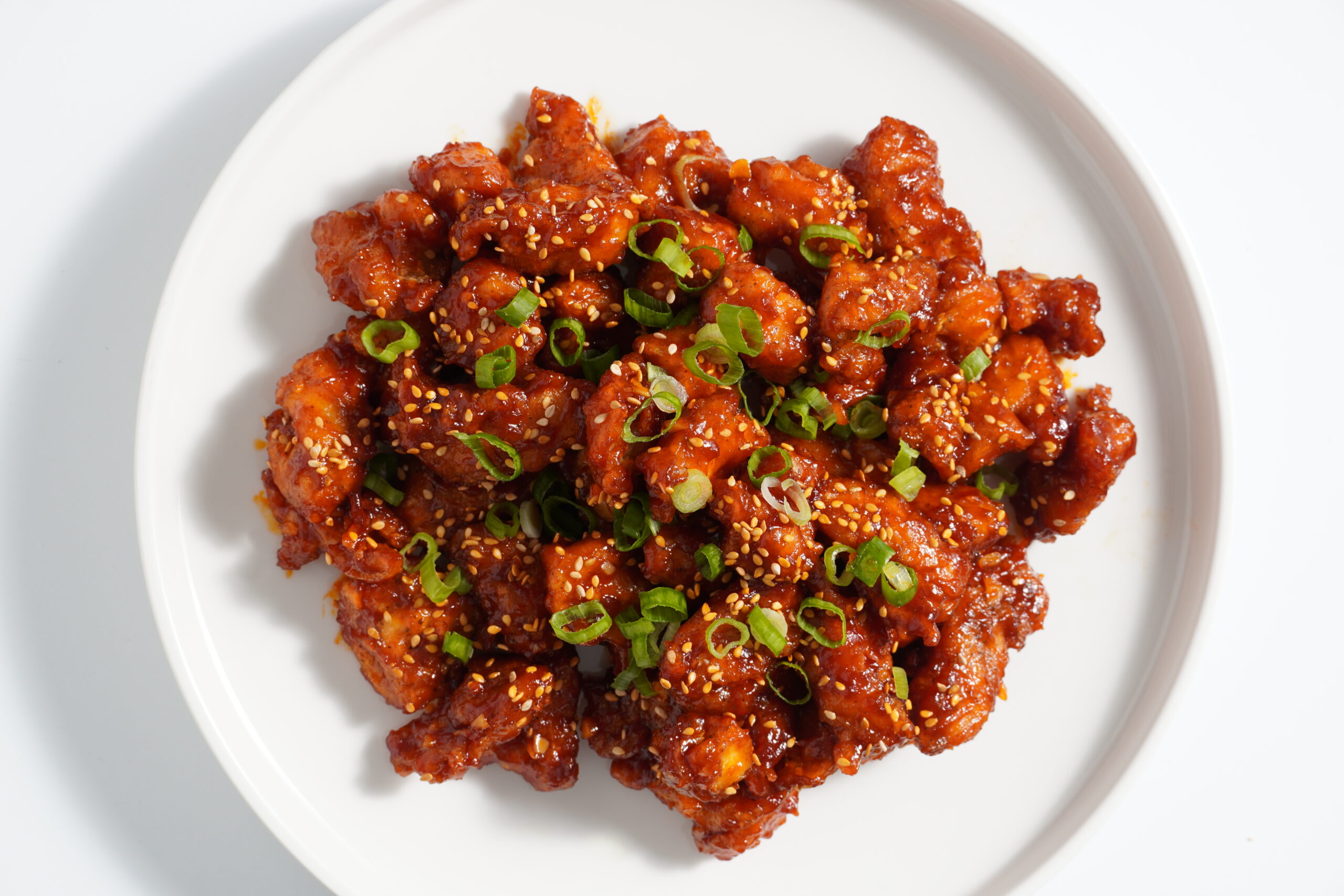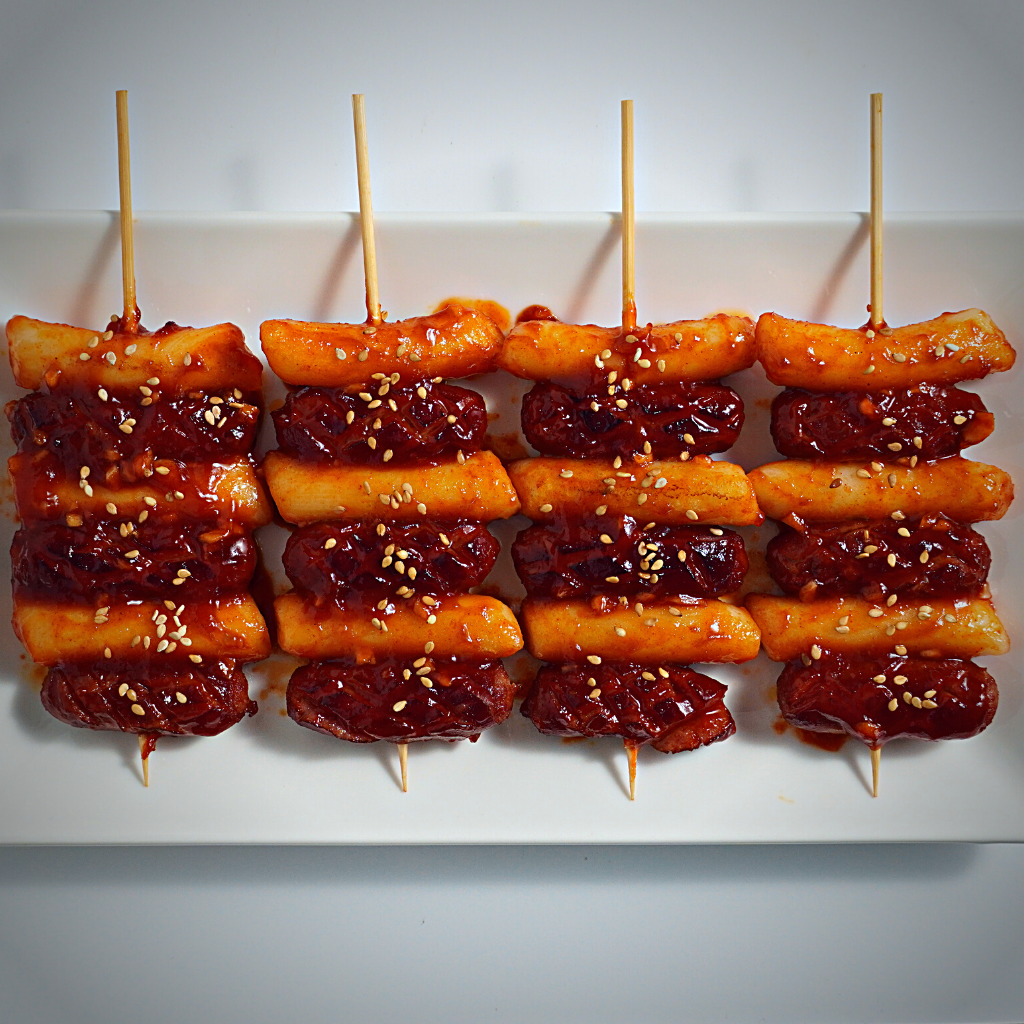In Korean: 고추장 치킨
Gochujang Chicken is a popular chicken dish in Korea. The flavor profile of this is savory, spicy, and sweet. It is easy to make and it can be eaten for lunch, dinner, or even as a snack (kind of like popcorn chicken but with a saucy kick). You can eat this dish by itself or with rice.
A little history on gochujang (fermented chili paste). This condiment was first documented between the 16th to 17th century. It became accepted and spread throughout Korea and because it was so accepted, it became one of the staple condiments. It’s become so popular that many of the Korean dishes include gochujang. It’s so flavorful and can be used in just about anything. It’s kind of like the Korean Sriracha as far as its popularity goes (flavor, of course, is totally different and they’re both amazing).
Not only is Gochujang chicken delicious and can be used on any dish, both hot and cold, but I found out that this condiment also has some health benefits as well. These include increasing metabolism, burning fat, decreasing blood sugar level, lowering heart disease as well as including Vitamin C, protein, dietary fiber, Vitamin A, and contains probiotics. It’s also low in calories (for anyone looking for low calorie condiment). Who knew? Also, note that while it does have some health benefits, it isn’t so significant to use this every day but it’s so nice knowing that there’s some health benefits which many condiments don’t necessarily have. Another thing to note is that it’s high in sodium so, like everything, moderation is key.
There are a variety of ways to approach and make this dish but I personally like to prep all the non-meat items first and then meat items last (to reduce germs from spreading, etc.) but you can prep your meat first and work on the other items while you let it marinate to save time. Just be sure to wash your hands really well to avoid cross contamination. For those who like their foods extra spicy, just add chili flakes to give it an extra kick. I personally don’t use chili flakes for this recipe but feel free to do so!
Some of the links I included below are affiliated which means I may earn a small commission if you click on them and make a purchase. However, these are products that I personally use, recommend to others, and have used specifically to create this recipe. Hopefully, including the condiments will be helpful for you.
Step By Step With Images
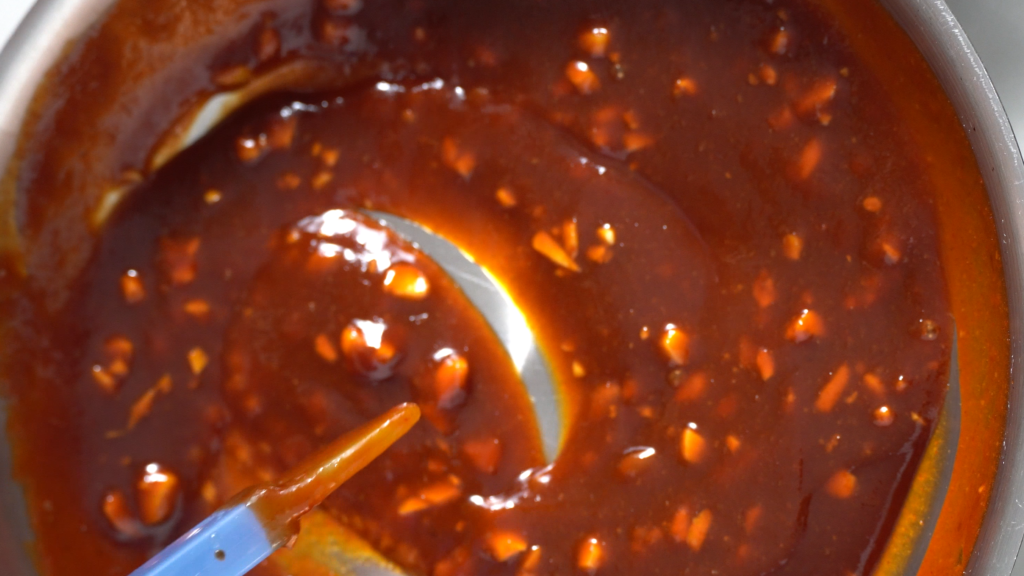
- To make the spicy gochujang sauce, in a medium pan, put the heat on medium low then, add garlic, ketchup, sriracha, gochujang, mirin, and brown sugar as you’re stirring. Then, gradually lower the temp to low heat and add in the sesame oil, soy sauce, rice vinegar, cornstarch slurry and stir. Add the rest of the soy sauce to taste, and continue to stir on low heat for another minute. Set it aside.
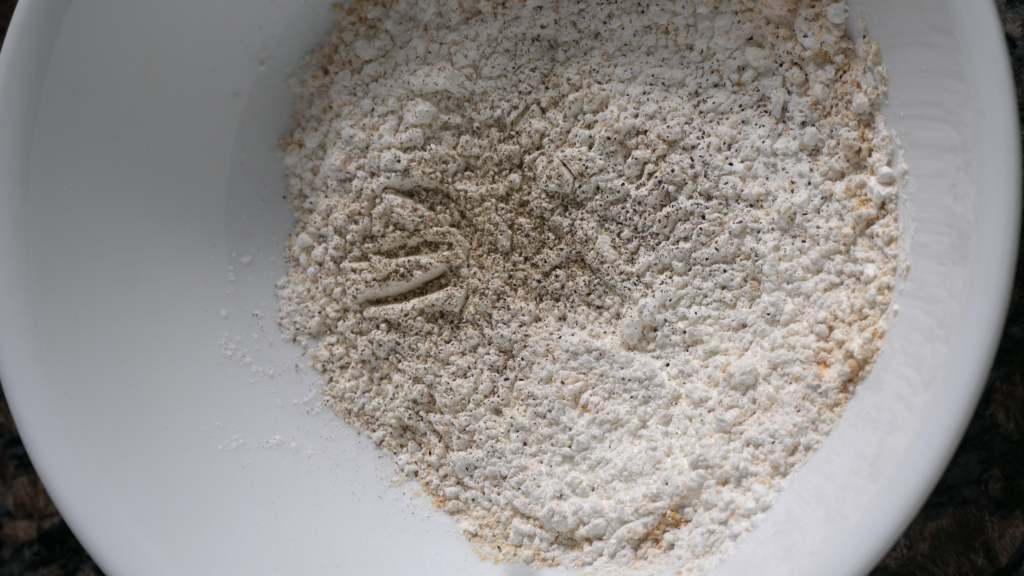
- To make the chicken seasoning, on a side bowl, add corn starch, ginger powder, and garlic powder. Add a bit of black pepper and mix the ingredients together then set it aside.
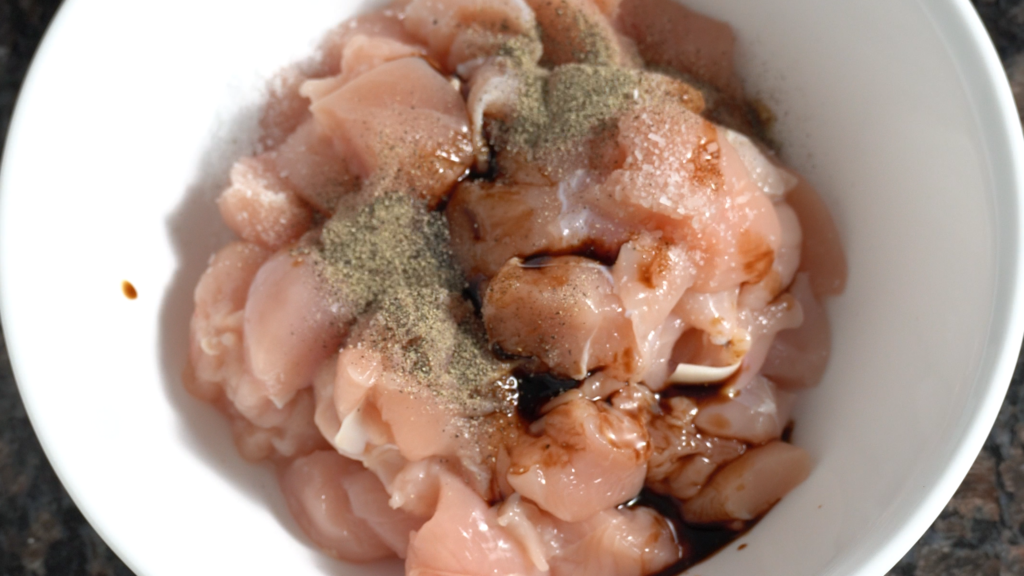
- Cut chicken tenderloins into bite size pieces and place it in a bowl. Add salt and pepper, soy sauce, and mix it together. Set it aside and let it marinate for 5-10 minutes.
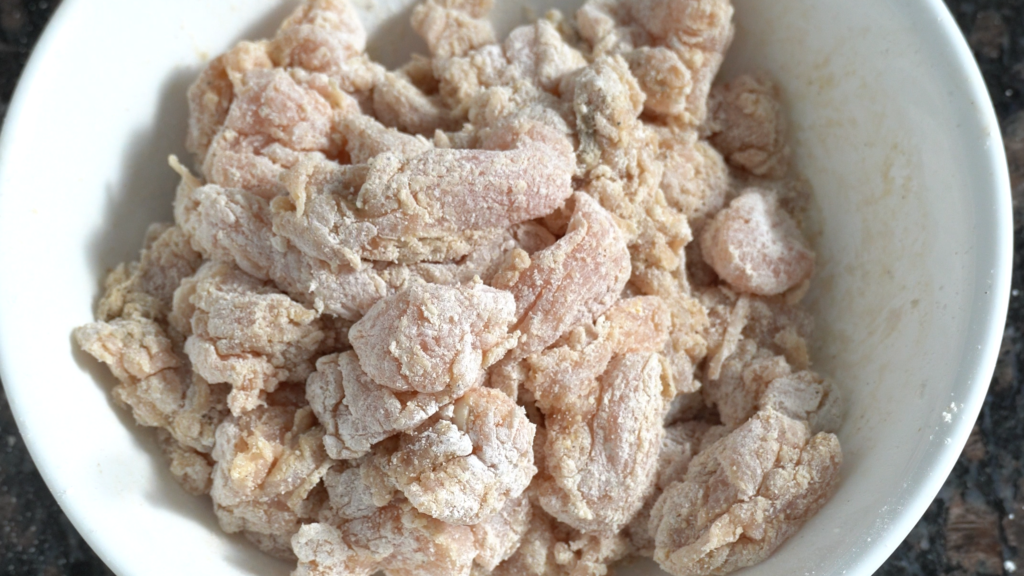
- After marinating the chicken tenderloins, add the chicken seasoning and mix it well together.
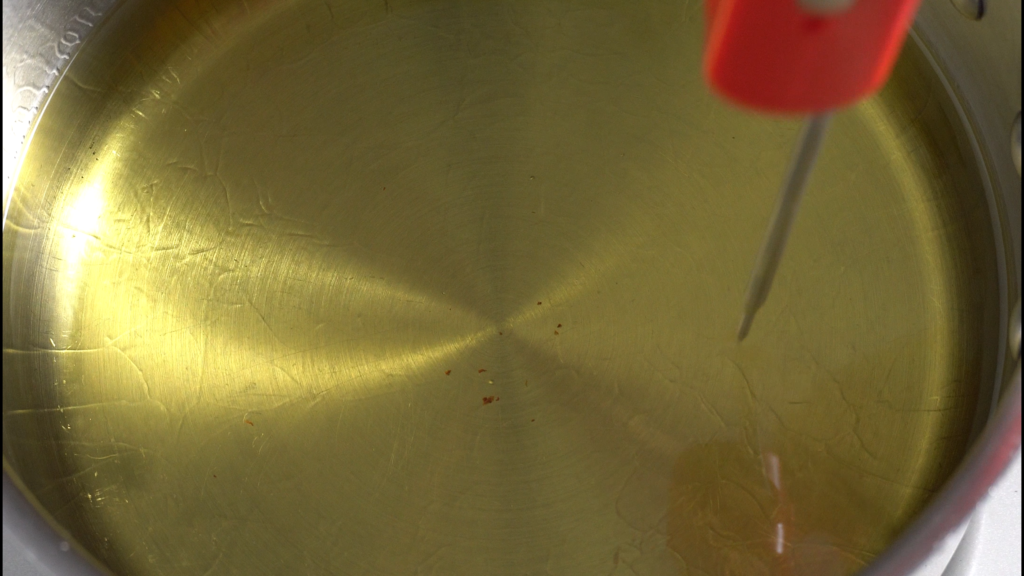
- In a pot, heat the oil to 350-360 degrees F and carefully place the seasoned chicken tenderloins into the oil and fry for about 5-6 minutes until golden brown.
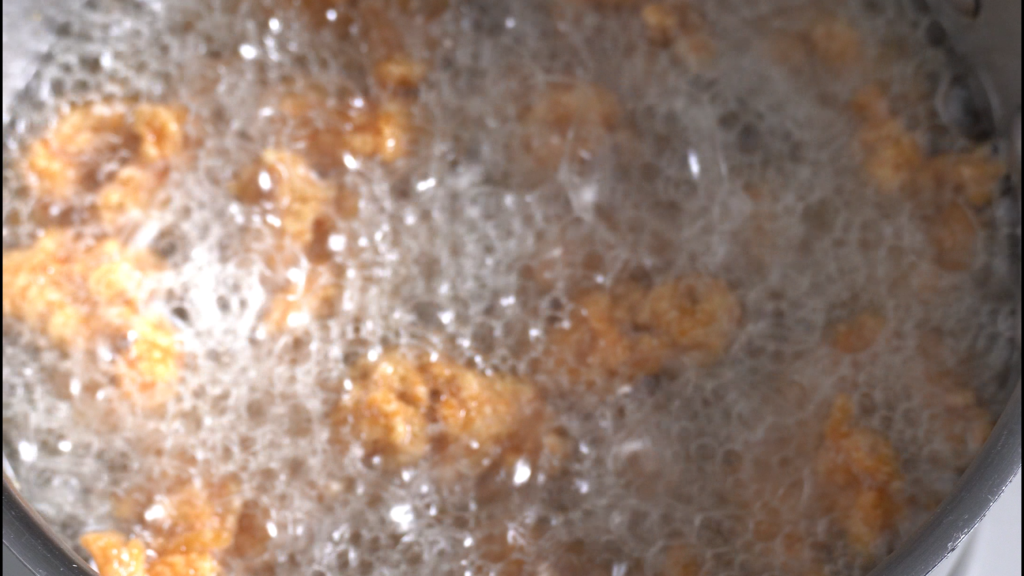
- Take out the fried chicken tenderloins and place it on a paper towel on a plate.
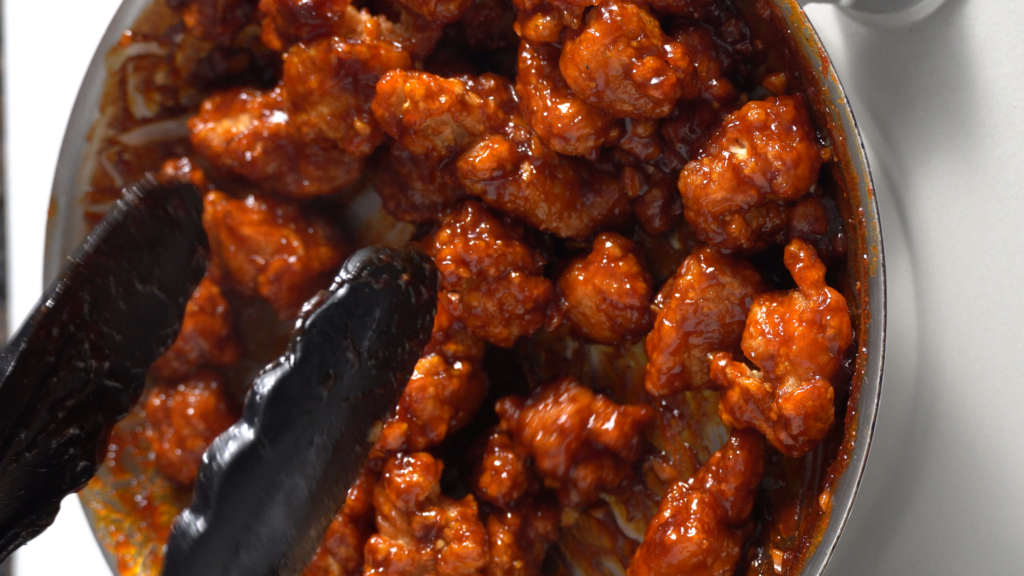
- Warm the pan of the spicy gochujang sauce on medium-low temperature and transfer the fried chicken tenderloins and mix until all the chicken tenderloins are coated in the sauce.
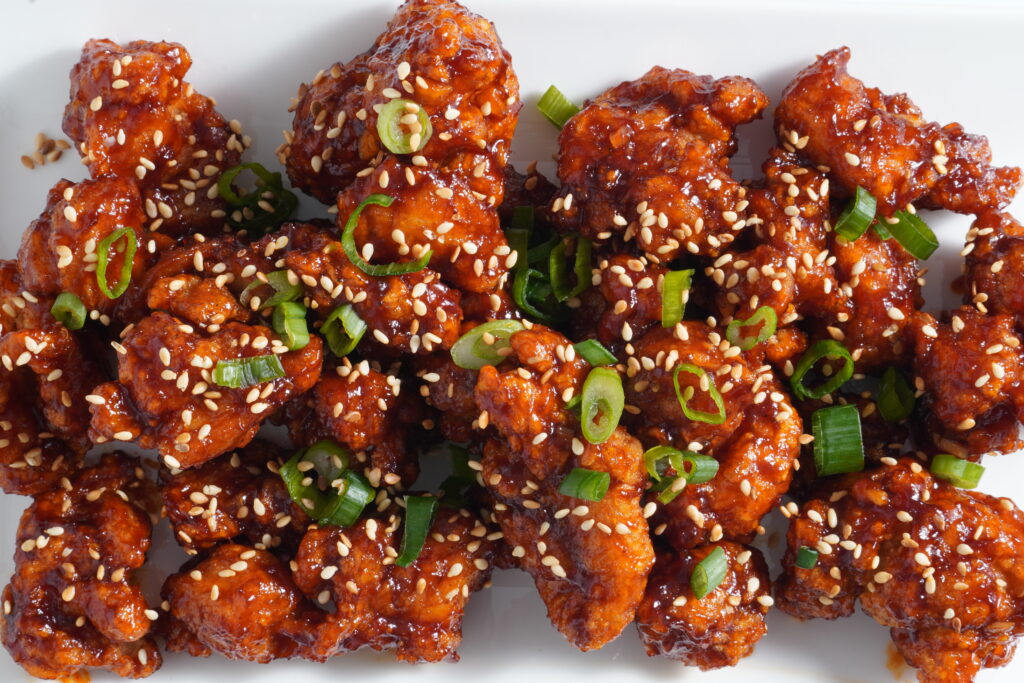
- Plate the coated chicken tenderloins into a plate and garnish it with toasted sesame seeds and scallions and enjoy!
Gochujang Chicken Recipe
2
servings25
minutesA popular S. Korean street food with a flavor profile of savory, spicy, and sweet. It is easy to make and it can be eaten for lunch, dinner, or even as a snack (kind of like popcorn chicken but with a saucy kick).
Ingredients
- Chicken Marinade
1 Ib chicken tenders (cubed to bite-size)
1 tbsp soy sauce
½ tsp kosher salt
½ tsp black pepper
- Chicken Seasoning
¼ to ⅓ cup cornstarch
1 tsp ginger powder
1 tsp garlic powder
½ tsp of black pepper
3 cups avocado oil (for frying)
- Spicy Gochujang Sauce
¼ cup gochujang
¼ cup ketchup
¼ cup mirin
¼ cup brown sugar (for sugar substitute, I used Swerve brown sugar)
4 tbsp soy sauce (separated into two; for less salt, use low-sodium soy sauce)
2 tsp Sriracha
2 tsp sesame oil
2 tsp rice vinegar
4 cloves minced garlic
Optional: crushed chili flakes (Optional for those who prefer a bit more spice)
- Cornstarch Slurry
1 tsp cornstarch
1 tsp water
- Garnish
Toasted sesame seeds
Minced scallions
Directions
- To make the spicy gochujang sauce, in a medium pan, put the heat on medium low then, add garlic, ketchup, sriracha, gochujang, mirin, and brown sugar as you’re stirring. Then, gradually lower the temp to low heat and add in the sesame oil, soy sauce, rice vinegar, cornstarch slurry and stir. Add the rest of the soy sauce to taste, and continue to stir on low heat for another minute. Set it aside.
- To make the chicken seasoning, on a side bowl, add corn starch, ginger powder, and garlic powder. Add a bit of black pepper and mix the ingredients together then set it aside.
- Cut chicken tenderloins into bite size pieces and place it in a bowl. Add salt and pepper, soy sauce, and mix it together. Set it aside and let it marinate for 5-10 minutes.
- After marinating the chicken tenderloins, add the chicken seasoning and mix it well together.
- In a pot, heat the oil to 350-360 degrees F and carefully place the seasoned chicken tenderloins into the oil and fry for about 5-6 minutes until golden brown.
- Take out the fried chicken tenderloins and place it on a paper towel on a plate.
- Warm the pan of the spicy gochujang sauce on medium-low temperature and transfer the fried chicken tenderloins and mix until all the chicken tenderloins are coated in the sauce.
- Plate the coated chicken tenderloins into a plate and garnish it with toasted sesame seeds and scallions and enjoy!
Recipe Video
Notes
DID YOU MAKE THIS RECIPE? Tag @crabcakesandkimchi on Instagram and hashtag it #crabcakesandkimchi
